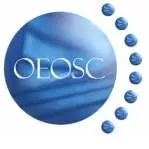OEOSC: Committee for Optics and Electro-Optical Instruments

OEOSC, the Committee for Optics and Electro-Optical Instruments, is a committee made up of U.S. optical experts whose primary responsibility is to review drafts of proposed international optical standards so that it can formulate the U.S. opinion of the suitability of those drafts to become international standards and to transmit that opinion, through ANSI, to the ISO technical committee. The committee is also responsible for reviewing U.S. national optical standards to determine which of them should be offered as drafts for new international optical standards. The OEOSC is the U.S. Technical Advisory Group (TAG) to ISO Technical Committee 172, Optics and Optical Instruments. Standards from OEOSC are available both individually, directly through the ANSI webstore, and as part of a Standards Subscription. If you or your organization are interested in easy, managed, online access to standards that can be shared, a Standards Subscription may be what you need - please contact us at: [email protected] or 1-212-642-4980 or Request Proposal Price.
Below are OEOSC's best-selling standards. To find additional standards, please use the search bar above.
ANSI/OEOSC OP1.002-2017
Optics and Electro-Optical Instruments - Optical Elements and Assemblies - Surface Imperfections
This standard establishes uniform practices for stating and interpreting tolerances and for conducting inspections of transmissive and reflective optical elements and cemented components for scratch, dig, edge, coating, and optical cement imperfections. Default specifications for bubbles and inclusions are also included.
ANSI/OEOSC OP1.002-2009
Optics and Electro-Optical Instruments - Optical Elements and Assemblies - Appearance Imperfections
This standard establishes uniform practices for stating, interpreting, and inspecting surface imperfections for transmissive and reflective optical elements and assemblies.
ANSI/OEOSC OP1.007-2020
For Optics and Electro-Optical Instruments – Optical Elements and Assemblies – Infrared Spectral Bands
This Standard divides the infrared region of the electromagnetic spectrum from 0.750 microns to 30.0 microns into named subregions, also known as bands, on the basis of the kinds of detectors or materials used to sense infrared radiation. It defines the generic form of the Abbe dispersion formula for materials that operate in the infrared spectrum and specifies reference wavelengths for standard Abbe numbers in each of the named bands. This Standard also defines standard reference wavelengths for the general metrology of infrared materials and components in each of the spectral bands.
ANSI/OEOSC OP1.0110-9-2015
Optics and Electro-Optical Instruments - Preparation of drawings for optical elements and systems - Part 9: Surface treatment and coating
This national standard establishes uniform parctices for indicating the treatments and coatings applied to optical surface for functional and/or protective purposes. It is based entirely on ISO 10110-9, with some modifications to accommodate standard practice in the United States.
ANSI/OEOSC OP1.9211-4-2014
Optics and photonics - Optical coatings - Part 4: Specific Test Methods
OP1.9211 identifies surface treatments of components and substrates excluding ophthalmic optics (spectacles) by the application of optical coatings and gives a standard form for their specification. It defines the general characteristics and the test and measurement methods whenever necessary, but is not intended to define the process method. This part of OP1.9211 provides specific test methods for optical coatings.
ANSI/OEOSC OP3.001-2001 (R 2008)
Optics and Electro-Optical Instruments - Optical Glass
This Standard establishes uniform practices for stating and interpreting specifications, tolerances, and functional requirements for optical glass that is used to fabricate lenses and other optical elements, such as prisms, windows, light pipes, etc., used in optical assemblies, systems, instruments, or other related uses.
ANSI/OEOSC OP1.0110-1-2011
Optics and Electro-Optical Instruments - Preparation of drawings for optical elements and systems - Part 1: General
OP1.0110-1 is a national standard which establishes uniform practices for drawing notations for optical elements and assemblies. It is based entirely on ISO 10110-1, but modified to accommodate standard practice in the United States.
ANSI/OEOSC OP1.0110-10-2014
Optics and Electro-Optical Instruments - Preparation of drawings for optical elements and systems - Part 10: Table representing data of optical elements and cemented assemblies
OP1.0110-10 is a national standard which establishes uniform practices for drawing notations in tabular form for optical elements and assemblies. It is based entirely on ISO 10110-10, but modified to accommodate standard practice in the United States.
ANSI/OEOSC OP1.0110-12-2014
Optics and Electro-Optical Instruments - Preparation of drawings for optical elements and systems - Part 12: Aspheric surfaces
This national standard establishes uniform practices for indications on drawings of aspheric optical surfaces. It is based entirely on ISO 10110-12, with the addition of a notation to allow the specification of Forbes aspheres, commonly called Qcon and Qbfs.
ANSI/OEOSC OP1.0110-5-2015
Optics and photonics - Preparation of drawings for optical elements and systems - Part 5: Surface Form Tolerances
OP1.0110 specifies the presentation of design and functional requirements for optical elements and systems in technical drawings used for manufacturing and inspection. This part of OP1.0110 specifies rules for indicating the tolerance for surface form.





